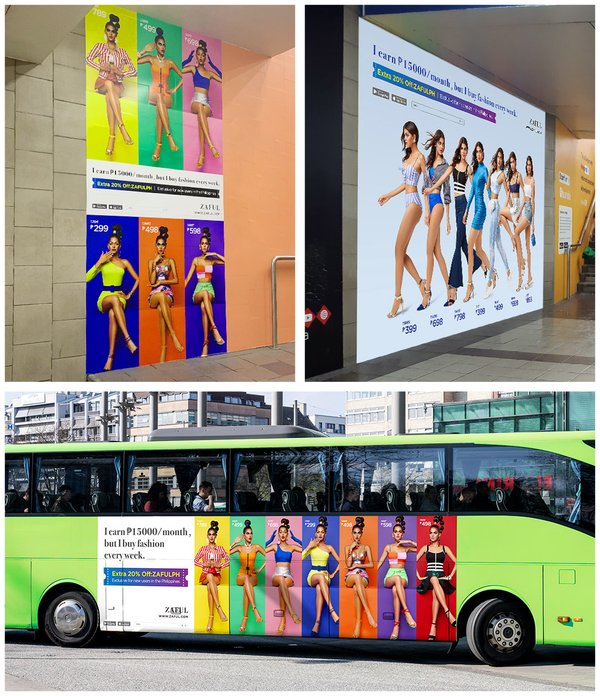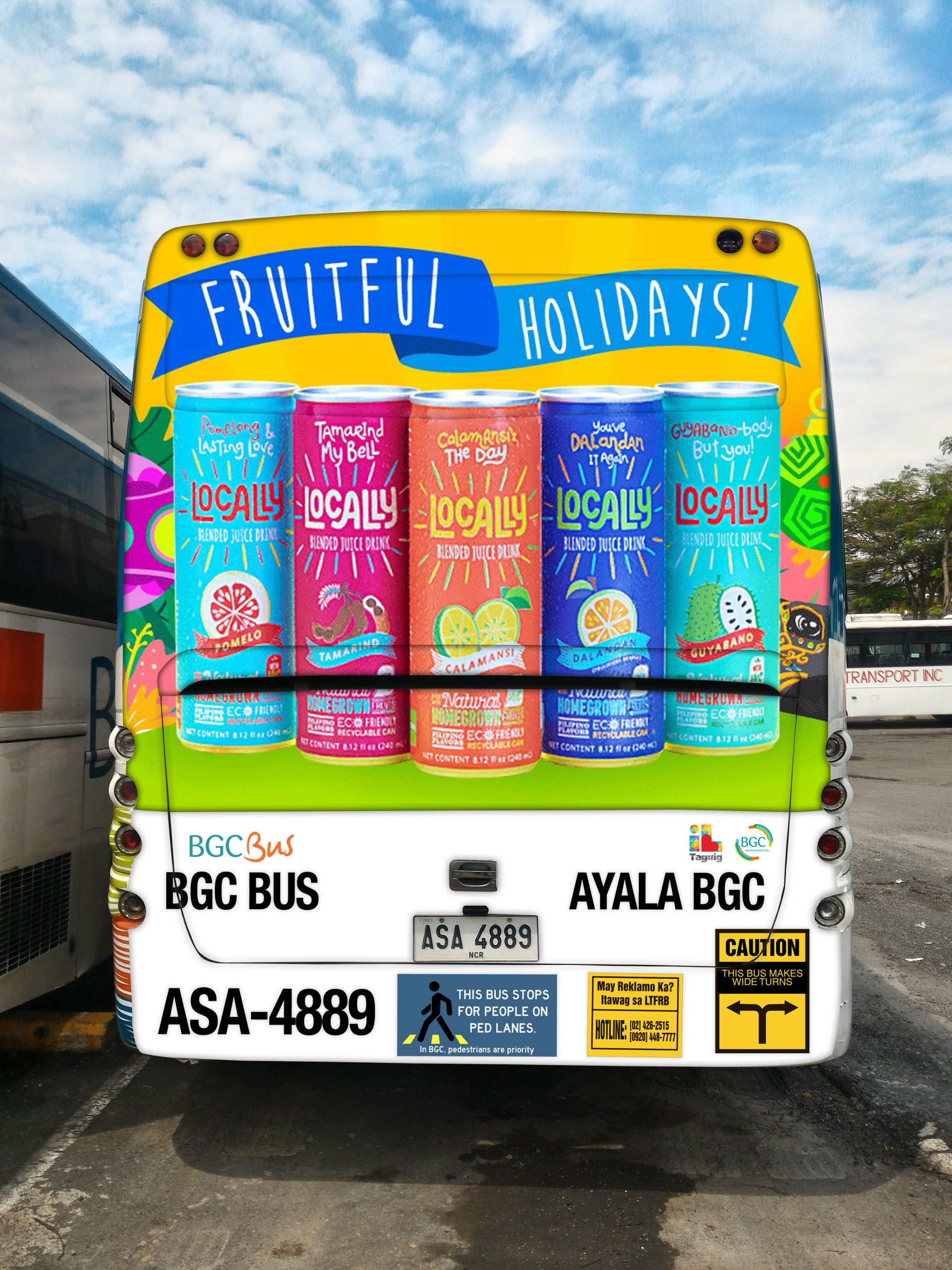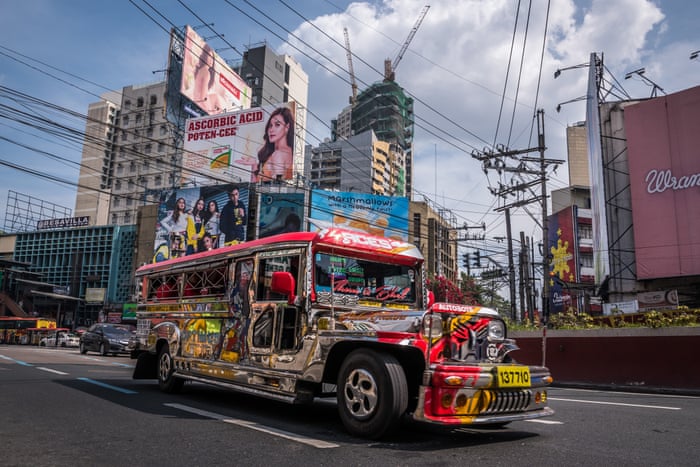Cost Effective Transit Advertising Philippines for Brand Recognition
Cost Effective Transit Advertising Philippines for Brand Recognition
Blog Article
Exactly How Transportation Marketing Can Change Public Transportation Spaces Into Dynamic Advertising And Marketing Platforms
Transportation advertising holds significant potential to redefine public transportation spaces into dynamic marketing platforms that inform and engage. As we explore the multifaceted benefits and developing techniques of transit advertising, it raises the question of how this transformation might redefine our interactions with both brands and the urban setting.
Advantages of Transportation Advertising

Additionally, transportation marketing is extremely cost-effective contrasted to conventional media. It permits advertisers to attain high perceptions at reduced costs, taking full advantage of roi. The captive target market of commuters gives a chance for brand names to communicate their messages to people who are commonly responsive during their traveling times.
Furthermore, the dynamic nature of transportation advertising and marketing allows projects to be upgraded frequently, making certain that messaging remains appropriate and prompt. This flexibility can be important in reacting to market trends or marketing occasions, maintaining the brand top-of-mind for customers. Last but not least, the pervasive existence of transportation advertising and marketing adds to brand recall; repeated direct exposure within acquainted travel contexts enhances brand recognition and fosters customer commitment, ultimately improving and driving sales brand name reputation.
Types of Transit Advertising And Marketing
Public transportation systems supply numerous formats for marketing, each dealing with different advertising approaches and audience engagement techniques. One popular type is external bus and train wraps, which cover the entire automobile and produce a mobile billboard impact, permitting high exposure in urban atmospheres. These covers can capture focus as they pass through active streets, reaching a varied target market.
Another prominent style is indoor advertising, which includes posters, digital screens, and ads on transit seats. These placements engage passengers during their trip, reinforcing brand name messaging in a confined space. Digital displays, in specific, use the benefit of vibrant web content, making it possible for advertisers to update messages in real-time.
Terminal advertising and marketing is also substantial, including posters, banners, and interactive booths within transportation terminals. These ads take advantage of foot web traffic and can target details demographics based upon location.
Lastly, promotional partnerships with transit authorities can bring about one-of-a-kind campaigns, such as themed transportation experiences or events, enhancing the overall involvement with commuters. Each kind of transportation advertising and marketing provides distinctive advantages, enabling brands to customize their technique to efficiently reach their target market within the general public transportation ecological community.
Engaging Commuters Properly
Commuters are increasingly flooded with advertising and marketing messages during their daily journeys, making it crucial for brands to engage them in innovative ways. To record focus in this congested space, advertisers have to prioritize imagination and significance. Making use of appealing visuals and succinct messaging can considerably improve the chance of engagement.
Interactive elements, such as QR codes or enhanced truth attributes, can additionally change static ads into try these out immersive experiences, promoting a much deeper link with the target market. Brands ought to concentrate on addressing commuters' rate of interests and requirements, tailoring messages to resonate with their way of life, whether with promos for regional services or solutions created to boost their travelling experience.
In addition, timing plays a crucial role; strategically placing ads during peak commuting hours can make best use of presence and impact. Involving travelers effectively also involves leveraging social media combination, allowing guests to share their promos or experiences directly from transit systems, thereby intensifying brand name reach.
In significance, reliable involvement pivots on comprehending the traveler trip and creating engaging, interactive, and pertinent advertising and marketing experiences that not just catch focus however likewise drive activity and commitment. By doing so, brand names can change public transportation right into a vibrant advertising and marketing system that resonates with its target market.

Measuring Advertising Influence
Just how can brand names properly analyze the performance of their advertising and marketing projects en route atmospheres? Determining the impact of transportation marketing requires a diverse method that integrates qualitative and measurable metrics. One widespread technique is tracking involvement via mobile analytics, where brands can evaluate foot web traffic patterns and app communications previously, during, and after campaigns.
Surveys can provide useful insights into brand recall and customer view, permitting brand names to assess how well their messages resonate with travelers. In addition, checking social networks engagement pertaining to details campaigns can reveal changes in public assumption and brand name discussion.

Additionally, teaming up with transit agencies can improve dimension accuracy, as they frequently possess thorough market data on ridership patterns. By incorporating these approaches, brand names can develop an extensive understanding of their advertising and marketing effectiveness, making certain that their campaigns not only reach but also impact their target market properly.
Future Trends en route Advertising And Marketing
A considerable shift is expected in transit marketing as technical innovations and altering customer habits reshape the landscape. Transit Advertising Philippines. The integration of interactive media and electronic screens is expected to enhance engagement, permitting brand names to provide dynamic content that reverberates with varied audiences. As public transport systems welcome clever innovation, advertisers will utilize real-time information analytics to tailor messages based on guest demographics and habits
Additionally, enhanced reality (AR) is positioned to reinvent the method commuters connect with ads. By supplying immersive experiences, AR can transform a mundane trip right into an appealing narrative that captures focus and fosters brand commitment. This technology will likely motivate marketers to produce more experiential projects that drive consumer click here for more communication.
Sustainability is another critical pattern influencing transit advertising. As ecological consciousness expands, brands will progressively seek to straighten with environment-friendly methods, utilizing sustainable products and article source promoting environment-friendly initiatives within their projects.
Verdict
In conclusion, transportation advertising and marketing provides considerable benefits by enhancing brand name exposure and involving a restricted audience. As patterns progress, the potential for innovative interactions between commuters and brands is poised to grow, guaranteeing that transportation marketing continues to be a vital component of modern advertising methods.
Transit advertising holds significant potential to redefine public transportation rooms into dynamic advertising platforms that engage and educate. The pervasive existence of transit marketing contributes to brand recall; duplicated direct exposure within acquainted traveling contexts enhances brand name understanding and promotes consumer loyalty, ultimately boosting and driving sales brand name online reputation.
Exactly how can brands precisely evaluate the effectiveness of their advertising projects in transit environments?In conclusion, transportation advertising and marketing offers substantial benefits by improving brand name exposure and engaging a restricted target market. Transit Advertising Philippines. As patterns develop, the possibility for cutting-edge interactions in between brand names and commuters is positioned to expand, making sure that transit advertising continues to be an essential element of modern advertising techniques
Report this page